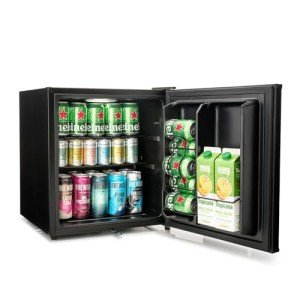10-Pinterest Accounts You Should Follow About Commercial Coolers

The Role and Evolution of Commercial Coolers in the Modern Marketplace
In the bustling landscape of modern commerce, the function of commercial coolers can not be overemphasized. These vital pieces of equipment are the foundation of different industries, from grocery stores and convenience stores to restaurants and healthcare centers. This short article looks into the significance of commercial coolers, their types, advancements, and the effect they have on company operations.
Intro to Commercial Coolers
Commercial coolers, also called commercial refrigerators, are designed to preserve a consistent and regulated temperature level environment for the storage of perishable products. Unlike Glass Front Fridges , commercial coolers are constructed to withstand heavy usage and are geared up with features that guarantee dependability and performance in high-demand settings. They are essential for protecting the quality and security of food, beverages, and other temperature-sensitive items.
Types of Commercial Coolers
Cooled Display Cases
- Vertical Coolers: Commonly discovered in supermarkets and corner store, these systems allow clients to view and choose products quickly.
- Horizontal Coolers: Often utilized for displaying beverages and small products, these systems can be either open or with glass doors.
Walk-in Coolers
- Walk-in Freezers: Large, room-sized systems created for bulk storage of frozen items.
- Walk-in Coolers: Similar to walk-in freezers but preserve a higher temperature level, ideal for storing dairy, produce, and other perishables.
Undercounter Coolers
- Bar Coolers: Compact systems created to fit under bar counters, suitable for storing beverages and mixers.
- Prep Coolers: Used in kitchens for storing components and ready foods.
Bottle Coolers
- Single-Door Coolers: Ideal for small areas, these units are typically utilized in workplaces and small retail settings.
- Multi-Door Coolers: Larger units with several compartments, ideal for high-volume sales environments.
Reach-in Coolers
- Single-Door Reach-ins: Compact and efficient, these units are ideal for small companies and restaurants.
- Double-Door Reach-ins: Offer more storage area and appropriate for medium-sized operations.
Advancements in Commercial Coolers
The innovation behind commercial coolers has advanced significantly for many years, leading to more efficient and sustainable options. Some significant improvements include:
- Energy Efficiency: Modern coolers are designed to take in less energy, decreasing functional expenses and environmental impact. Features like LED lighting, high-efficiency compressors, and advanced insulation contribute to this.
- Smart Technology: Many commercial coolers now feature clever functions, such as remote tracking, temperature informs, and automated defrost cycles. These innovations improve operational efficiency and product safety.
- Eco-Friendly Refrigerants: The usage of eco-friendly refrigerants, such as R-290 (lp) and R-600a (isobutane), is becoming more common, decreasing the carbon footprint of commercial coolers.
- Personalization: Manufacturers are using more adjustable alternatives, allowing companies to tailor their coolers to particular requirements, such as size, style, and features.
Effect On Business Operations
Commercial coolers play an important function in numerous aspects of service operations:
- Product Preservation: By keeping optimal temperature level conditions, coolers make sure that items stay fresh and safe for usage, minimizing waste and enhancing consumer fulfillment.
- Operational Efficiency: Efficient cooling systems reduce downtime and upkeep costs, allowing companies to focus on other critical operations.
- Consumer Experience: Well-maintained and visually pleasing coolers can improve the shopping experience, motivating customers to make purchases.
- Regulative Compliance: Commercial coolers help companies fulfill health and wellness policies, making sure compliance and avoiding charges.
FAQs
Q: What is the distinction in between a commercial cooler and a household fridge?
- A: Commercial coolers are designed for heavy use and are built with more robust products and advanced functions to ensure reliability and performance in high-demand settings. Home refrigerators, on the other hand, are developed for personal use and are not equipped to deal with the same level of usage or storage capacity.
Q: How can I ensure my commercial cooler is energy effective?
- A: To guarantee energy efficiency, choose a cooler with an Energy Star rating, usage LED lighting, maintain regular cleansing and upkeep, and consider clever functions like remote monitoring and automated defrost cycles.
Q: What are the advantages of using environment-friendly refrigerants in commercial coolers?
- A: Eco-friendly refrigerants, such as R-290 and R-600a, have a lower international warming capacity (GWP) and ozone depletion potential (ODP) compared to standard refrigerants. This reduces the ecological effect of commercial coolers and assists businesses meet sustainability goals.
Q: How frequently should I clean and maintain my commercial cooler?
- A: Regular cleaning and upkeep are important for the optimal efficiency of commercial coolers. It is recommended to clean up the cooler at least once a month and carry out an extensive maintenance check every six months. This includes inspecting the seals, cleaning up the condenser coils, and guaranteeing the temperature level settings are precise.
Commercial coolers are indispensable in the modern marketplace, offering vital services that make sure the quality and security of disposable products. With developments in innovation and a growing concentrate on sustainability, these systems are becoming more efficient and eco-friendly. By comprehending the various types of commercial coolers and their effect on company operations, owners and managers can make educated decisions that benefit both their operations and the environment.

